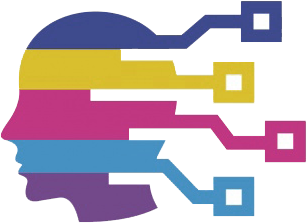In the rapidly evolving field of artificial intelligence, a bold move is underway that could redefine how we build and train language models. Collective-1, an innovative large language model (LLM), has emerged from the collaborative efforts of two startups, Flower AI and Vana. These trailblazers are exploiting a revolutionary method of training that distributes computational tasks across global networks of GPUs, undermining the traditional centralized practices that have dominated the industry. By marrying unconventional methodologies with a rich dataset comprising both private communications and publicly accessible material, this new model promises to challenge the very fabric of AI development.
The Distributed Paradigm Shift
The advent of Collective-1 represents not just a technological advancement but also a philosophical shift in AI development. Flower AI’s techniques facilitate a seamless training process that spans hundreds of interconnected computers, potentially allowing even smaller players in the market — startups, universities, or countries with limited resources — to contribute to and benefit from sophisticated AI applications. This contrasts sharply with the current paradigm, which favors mega-corporations equipped with vast compute resources lucidly concentrated in data centers populated by expensive hardware.
Nic Lane, cofounder of Flower AI and a computer scientist at Cambridge University, champions this distributed approach, emphasizing its scalability. Lane’s team is ambitiously working toward training increasingly complex models, including one that could reach 30 billion parameters and another projected to hit the 100 billion mark. Such advancements indicate not only a commitment to better models but also serve as a rallying cry for change in the AI landscape, favoring inclusivity over exclusivity.
The Data Dilemma and Its Implications
At the heart of this disruptive movement lies the intricate balance of computing power and data sourcing. With Collective-1 relying on data gleaned from platforms like X, Reddit, and Telegram, the delicate line between public and private information raises essential questions around data ethics and the ownership of intellectual resources. As AI companies grapple with regulatory scrutiny and societal implications, this model’s reliance on diverse material may inspire a new wave of transparency and ethical considerations in AI development.
Critics may argue that although Flower AI’s methodology is intriguing, its strength lies in a fundamentally different approach to the formal training of models. Helen Toner, an AI governance expert at the Center for Security and Emerging Technology, predicts that while Flower AI’s initiatives may face hurdles in keeping pace with industry leaders, they could nonetheless serve as a “fast-follower” strategy. This perspective points to the dynamic interplay between innovation, competition, and ethical responsibility, indicators that might shape the future regulatory landscape.
Empowering the Underdogs
The implications of a distributed training approach are profound. By democratizing access to advanced AI technologies, smaller enterprises and countries lacking state-of-the-art infrastructure could finally partake in the AI revolution. This potential fragmentation of power could challenge the existing hegemony held by a few colossal entities, fundamentally altering industry dynamics. Imagine a world where pioneering AI applications emerge from unexpected corners—universities, community organizations, and startups honing localized adaptations of technology.
This vision extends to nations that lack the capacity to house sprawling data centers. With the ability to collaborate and pool resources across geographical barriers, such countries could harness global talent and computational power in ways that were previously unthinkable. Flower AI’s work could serve as a catalyst for a diverse ecosystem where innovation proliferates like never before, with a broader spectrum of voices contributing to AI advancements.
Beyond Language: The Multimodal Future of AI
Lane’s team isn’t stopping at LLMs; they’re setting their sights on training multimodal models that interlace text, image, and audio data, further expanding the horizons of what AI can achieve. This ambition propels the conversation beyond the confines of language processing into the realm of a more holistic AI experience. The blending of various data types caters to an increasingly interconnected digital landscape, where users demand rich, multifaceted interactions with technology.
As technologies evolve, the notion of data silos will become increasingly obsolete. The journey towards creating rich multimodal experiences will necessitate collaboration across disciplines, sectors, and borders. This integrative approach emphasizes the shared narrative in AI’s evolution—one that acknowledges the unique contributions of diverse creators. By adopting this mindset, the industry can build resilient systems that reflect the complexity and plurality of human experience.

